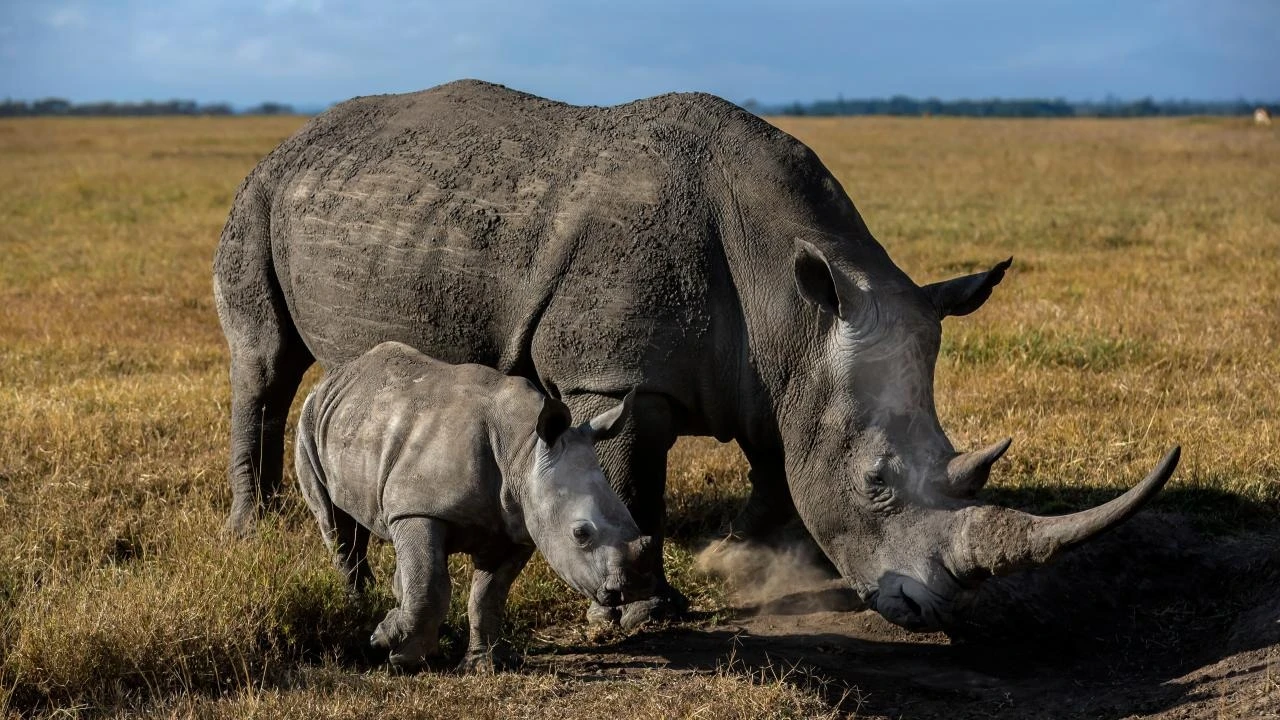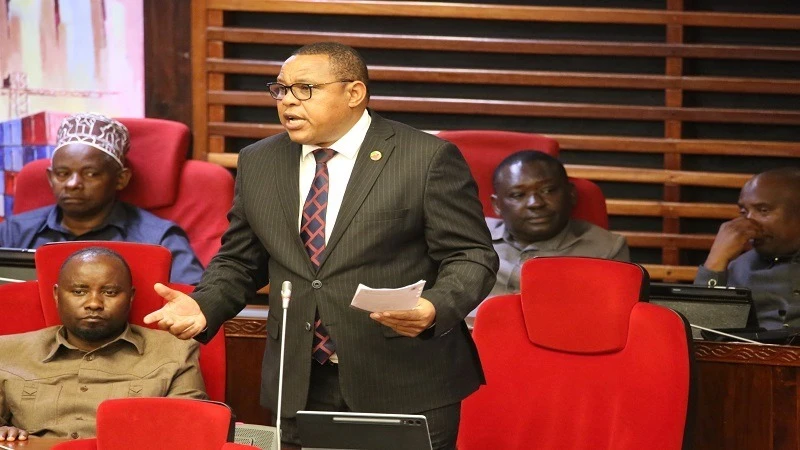SPECIAL REPORT: Efforts to increase black rhino population in Tanzania -1

Tanzania is now struggling to reset the population of black rhinos, seen as the most endangered wildlife species on earth.
In the late 1960s, the country used to be the black rhinos’ stronghold in Africa with its population counting over 10,000.
Poaching, environmental issues such as the abundance of invasive alien species in national parks and other conserved areas are among of the factors that resulted into declining of the black rhinos’ population in more than half a century.
However, poor management in genetic disparities, diseases and health-related mortalities downsized their population to an estimated 1,000 rhinos over a decade ago, and by extension to less than 200 rhinos as of 2019.
As of December 2019, the country’s black rhino population had stood at only 161.
The population has since regained to 253 rhinos, as of December 2023, thanks to concerted efforts by the government’s interventions.
In Tanzania, there are two subspecies of black rhinos namely the Eastern black rhino, known by its scientific name as Diceros bicornis michaeli and the Southern central black rhino, well known by its scientific name as Diceros bicornis minor.
When it comes to the African continent, one subspecies is added: the South-western black rhino, well known by its scientific name as Diceros bicornis bicornis which amusingly translates as ‘two horn two-horn two horn’.
In the continent, rhinoceros are among the big five mammals apart from lion, elephant, buffalo and leopard.
In East Africa, Kenya leads with many black rhinos of which the majority is the Eastern black rhino species with estimated 1,780 in population.
Of those, WWF estimates 938 are Eastern black rhinos and Save the Rhinos suggests an estimated 840 Southern white rhinos in Kenya.
The top five African countries with the highest population of Eastern black rhinos as of December 2023 include Namibia (2,196), South Africa (2,056), Kenya (938), Zimbabwe (616) and Tanzania (253).
Philbert Ngoti, National Rhino Coordinator, Ministry of Tourism and Natural Resources said in a recent interview that black rhinos’ population steadily expanded between 2016 and 2020.
He said that in 2016 the population of black rhinos in conserved areas managed by the Tanzania National Parks Authority (TANAPA) was 92.
Ngoti who also serves as TANAPA’s Conservation Principal Officer said that the population grew up to 94 black rhinos in 2017 which piled up to 101 rhinos in 2018 which later in 2019 topped to 109 rhinos and in 2020 there were 118 black rhinos.
The black rhinos’ population has also seen an increase in the Ngorongoro Conservation Area Authority (NCAA).
Ngoti said that there were 50 rhinos in the NCAA in 2016.
The population grew to 56 in 2017 that increased to 58 rhinos in 2018, further increased to 59 in 2019 and 69 in 2020.
“There has been a sluggish increment of the rhinos in conserved areas managed by the Tanzania Wildlife Management Authority (TAWA) as most of these areas are highly surrounded by human beings settlements, thus scaring away the rhinos to other conserved areas where they can stay more comfortably,” said Ngoti.
According to him, close interventions by TAWA in the wildlife managed areas (WMAs) that were targeted in enhancing wildlife protection and sustaining the prevalence of endangered species implemented between 2017 and 2020 resulted in notable positive impact.
He said there were six black rhinos in 2016 across all WMAs. The same population was recorded in 2017 and 2018.
Interventions by TAWA and the rhinos unit under intensive support from the ministry’s wildlife unit and private partners had seen the population growing to 17 black rhinos in 2019 and 18 rhinos in 2020 making a total of 205 black rhinos in all conserved areas as of December 2020, a target that was intended to be achieved by 2023.
He said the growth rate in the black rhinos’ population between 2016 and 2020 was 10.80 percent.
As of July 2021, there were 209 black rhinos in the identified conserved areas.
Collectively, he said that in the TANAPA managed areas, there were 120 rhinos, 71 in the NCAA and 18 in areas under TAWA.
Ngoti asserted that of the total population, 108 were female, 78 were male and 23 were unsexed.
“The population survey to determine the sex of the 23 unsexed black rhinos is ongoing. Their sex might be identified in the next report which is yet to be approved and made available to the public. Expectations are that the updated report will be released in December this year or earlier next year,” said Ngoti.
Ngoti pointed out that 80 percent of the black rhinos in Tanzania are found within the Serengeti National Park ecosystem.
According to a report by the Ministry of Tourism and Natural Resources dubbed: ‘Conservation and Management Plan for Black Rhino in Tanzania (2019-2023)’ the ministry had set the goal of increasing black rhino population at a minimum rate of five percent per annum to reach at least 205 black rhinos by the end of 2023, using a meta-population management approach in line with internationally best practiced standards.
It states that in making this plan a reality, several factors were considered such as eliminating invasive alien species in national parks, strengthening biological management, strengthening rhino monitoring for management, protection of the rhino population, resource mobilization and their habits and trans-boundary rhino population management.
The report states that the National Rhino Management Plan (2019-2023) was co-funded by the government with development partners in the wildlife sector such as WWF Tanzania, with an estimated financial support of 339mn/-, Frankfurt Zoological Society at an estimated $1.56 billion, FSS with 185mn/- and PAMS Foundation support of $337,000.
Other funders were Tanzania Tracker Safaris at a tune of 274.80mn/- and GRUMETI FUND at a tune of 16.70bn/- among other non-governmental organization donors.
Noah Sitati, WWF Tanzania Wildlife Species Expert said that the organization played a critical role in realization of the black rhinos’ population through financing part of the activities implemented in the plan.
Sitati said that the funds were allocated to establishment of a national rhino database, national rhino coordination office and procurement of rhino monitoring equipment.
“Black rhinos are among the five wildlife rare species and for that reason all stakeholders need to be on board and join forces to protect them for today and future conservation purposes,” said Sitati.
Antonia Raphael, Principal Wildlife Officer in the Ministry of Natural Resources and Tourism said that rhinos ought to be well managed and protected for the benefits of the present and future generations.
She said black rhinos play a critical role as one of the terrestrial mammals mostly preferred by tourists hence generating a considerable amount of revenue through non-constructive tourism and are classified as critically endangered species.
Loss of habitats has been significantly the two rhino species leading them to live in ever smaller and more isolated areas.
She said among the efforts observed by the ministry in conserving the species include the development of the 2019-2023 action plan aim aimed at serving the endangered species.
The plan’s implementation has seen black rhinos’ population growing to 253 at the end of 2023 from 161 in at the end of 2019, she said.
“The way forward includes the development of a ten-year Rhino Management Strategic Plan 2024/34, which is underway and its implementation will bring more impact in the growth of black rhinos’ population,” she said.
The Tanzania Tourist Board (TTB) Director General Ambassador Ephraim Mafuru said that black rhinos are among the big five mammals in the country’s national parks that foreign tourists prefer to see when they are in Tanzania.
They are a great component in attracting visits that bring in millions of foreign currencies on a yearly basis.
According to the latest National Bureau of Statistics (NBS) report, tourism contributes 17 percent of the country’s gross domestic product (GDP) and 25 percent of exports earnings.
NBS states that in 2023, foreigners who visited various national parks and other tourist destinations were 1.8 million, while domestic tourists were 1.9 million making a total of 3.7 million tourists.
As at December last year, tourists attracted revenues worth $3.37 billion (8.74trn/-).
The Tanzania Tourist Board had set a target of attracting 5 million tourists by 2025.
To be continued.
Top Headlines
© 2025 IPPMEDIA.COM. ALL RIGHTS RESERVED

























